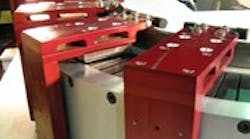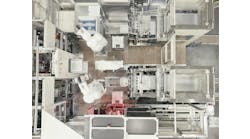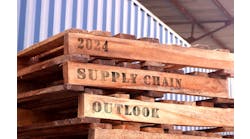Jacobs Automation was founded in 2002 with the goal of delivering transforming technology to the packaging machine industry by changing hardware-laden machinery into software-based, flexible and fast digital-centric machinery.
“In 2005, we received our first patent for PackTrak, our flagship product that delivers linear servo drive technology to the packaging, converting and material-handling industries,” says Keith Jacobs, CEO of Jacobs Automation (www.jacobsautomation.com). Before founding the company, Jacobs was director of research and development at R.A. Jones, a packaging machine builder that is part of Oystar. “In 2008, we secured investment from Siemens for the development of PackTrak for its Simotion machine control architecture, and that same year we secured our first major order.”
The Jacobs partnership with Siemens leverages the benefits of a global presence. With eight employees, all with technical responsibilities, and four of them degreed mechanical or electrical engineers, at its facility in Cincinnati, Jacobs plans to scale into other markets in the near future.
Machine downtime can cost consumer packaged goods (CPG) companies around $5,000/hour, says Mike Hyslop, senior vice president of sales and marketing at Jacobs. “In addition to routine maintenance, the average packaging machine experiences several product changeovers per week, with the average changeover taking four hours for hardware retooling,” he says. “Based on magnetic levitation (maglev)/servo technology, PackTrak provides independent software control of multiple movers on a track with minimal hardware components. This provides flexibility by reducing downtime to mere minutes and increases the speed of the movement of CPG product in packaging, converting and material-handling machines.”
PackTrak replaces rotary-driven chains, belts and gears with software and a direct-drive linear servo motor that independently controls each mover mounted on a track. “More than just a servo motor, PackTrak is a fully integrated motion control system with an absolute position sensor,” says Hyslop.
Jacobs’ automation is dependent on precise motion control. “We use Simotion as our motion control platform,” explains Hyslop. “This is connected to our drives using Profinet/Profidrive and we employ a limited amount of I/O.”
Machine controls all are PC-based using the Simotion P or Simotion D controllers, and Jacobs’ drives have proprietary DSP-based embedded controllers. “We use all-digital networks based on Profinet,” explains Hyslop. “Since our primary motion is via linear drives, we need a high-speed, real-time motion control network, which we deliver through Profinet IRT.”
Customers typically install their own safety systems, so Jacobs keeps the machines open and flexible for the inclusion of safety.
Not surprisingly, a move to linear drives is among the significant technology trends Jacobs thinks will impact machines during the next few years. “A key trend in linear drive technology is that the drive and axis are no longer tied to one another,” explains Hyslop. “In other words, drives and axes are interleaved depending on the position of the axis.”




